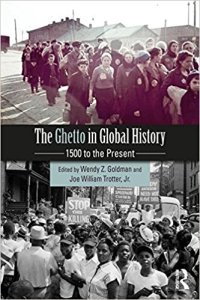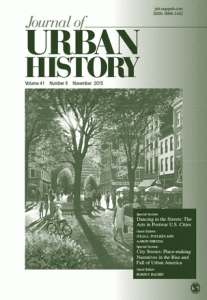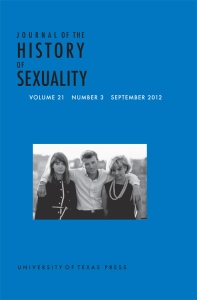Stephen Robertson's article, "Constrained but not contained: Patterns of everyday life and the limits of segregation in 1920s Harlem," has appeared in The Ghetto in Global History: 1500 to the Present, edited by Wendy Z. Goldman and Joe William Trotter, Jr. (Routledge, 2017). The article is based on the presentation he gave to the Sawyer… Continue reading Constrained but not contained: Patterns of everyday life and the limits of segregation in 1920s Harlem
Category: Publications
A Review of Digital Harlem & My Response in the American Historical Review
The February 2016 issue of the American Historical Review includes an extended review of Digital Harlem — “Harlem Crime, Soapbox Speeches, and Beauty Parlors: Digital Historical Context and the Challenge of Preserving Source Integrity,” by Joshua Sternfeld, and my response, “Digital Mapping as a Research Tool: Digital Harlem: Everyday Life, 1915–1930.” The AHR provides authors with a free-access link… Continue reading A Review of Digital Harlem & My Response in the American Historical Review
Playing the Numbers reviewed in the Journal of Urban History
Open Access Articles on 1920s Harlem
For Open Access Week this year, I've finally found time to deposit copies of my articles in the institutional repository at George Mason University. Those copies are post-prints -- the final version I submitted to the journal, not the published version. They are available online, for download, free to everyone. Included are four articles on… Continue reading Open Access Articles on 1920s Harlem
“Harlem in Black & White” now in the Journal of Urban History
Our article, "Harlem in Black and White: Mapping Race and Place in the 1920s," has now appeared in the Journal of Urban History, vol. 35, no. 9, September 2013, pages 864-880. The abstract and a related map can be found in an earlier post announcing the acceptance of the article for publication in 2011.
Digital Harlem in New York Archives
“Disorderly Houses” in the Journal of the History of Sexuality
Our article, “Disorderly Houses: Residences, Privacy, and the Surveillance of Sexuality in 1920s Harlem,” has now appeared in the Journal of the History of Sexuality 21, 3 (September 2012): 443-466. There are several maps already posted on this blog that are related to the article’s arguments. The police focus on street prostitution rather than what… Continue reading “Disorderly Houses” in the Journal of the History of Sexuality
Digital Harlem and Wikipedia
One of the purposes of this blog is to raise awareness of Digital Harlem and draw visitors to the site. When we created the site and the blog, I unreflectively adopted the adage 'if you build it, they will come,' expecting that simply being online would draw an audience. Perhaps that was once the case,… Continue reading Digital Harlem and Wikipedia
“Harlem in Black and White” in the Journal of Urban History
Our article "Harlem in Black and White: Mapping Race and Place in the 1920s," has been accepted for publication in the Journal of Urban History. It should appear at the end of 2012. The abstract reads: In the 1920s, as Harlem emerged as the largest black city in the world, a significant white presence remained… Continue reading “Harlem in Black and White” in the Journal of Urban History
Digital Harlem in “Writing History in the Digital Age”
An article about Digital Harlem, “Putting Harlem on the Map,” is part of Writing History in the Digital Age, a collection of articles being developed through open peer review. The editors solicited contributions addressing these questions: Has the digital revolution transformed how we write about the past — or not? Have new technologies changed our… Continue reading Digital Harlem in “Writing History in the Digital Age”











